
This contains visual material for the MC1R protein in humans, as well as visual material on the Y298C mutation in Spirit Bears.
- Subject:
- Biology
- Genetics
- Material Type:
- Diagram/Illustration
- Author:
- Paige Skrypnek
- Date Added:
- 08/25/2021

This contains visual material for the MC1R protein in humans, as well as visual material on the Y298C mutation in Spirit Bears.

In this activity, learners explore the "nuts and bolts" of gene chips. Learners construct a simple model of a DNA microarray (also known as gene chips) and learn how microarrays can be used to identify and treat disease--including cancer. This resource includes references and an explanation of microarrays.

This resource is a video abstract of a research paper created by Research Square on behalf of its authors. It provides a synopsis that's easy to understand, and can be used to introduce the topics it covers to students, researchers, and the general public. The video's transcript is also provided in full, with a portion provided below for preview:
"CRISPR-Cas9 genome editing has revolutionized biomedicine by enabling so-called genetic surgery on organisms ranging from single-cell microbes to sheep. Use of the technique, however, has been hampered by its low specificity, which can damage cells through unintended changes to DNA. New versions of the system have been engineered to avoid these off-target effects, but this has come at the cost of efficiency. Now, two separate teams have devised complementary ways to boost efficiency without sacrificing specificity, creating new promise for the field. The CRISPR-Cas9 system uses a protein called Cas9 and a guide RNA to make targeted breaks in DNA. When the guide RNA pairs with matching DNA, Cas9 cuts the DNA. The cut is then repaired by cellular machinery, and during this process, small pieces of DNA can be added or removed. One risk is that the system sometimes binds regions that aren’t exact matches, potentially causing unplanned changes..."
The rest of the transcript, along with a link to the research itself, is available on the resource itself.
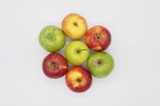
Pair this activity with lessons on selective breeding. Students will identify desirable genetic traits in apples and use a coin flip to simulate the steps and time involved to breed a new cultivar of apple. (Photo by Tom Paolini on Unsplash.com)
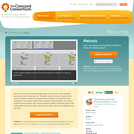
Meiosis is the process by which gametes (eggs and sperm) are made. Gametes have only one set of chromosomes. Therefore, meiosis involves a reduction in the amount of genetic material. Each gamete has only half the chromosomes of the original germ cell. Explore meiosis with a computer model of dragons. Run meiosis, inspect the chromosomes, then choose gametes to fertilize. Predict the results of the dragon offspring and try to make a dragon without legs. Learn why all siblings do not look alike.
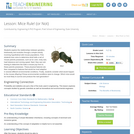
Students explore the relationships between genetics, biodiversity, and evolution through a simple activity involving hypothetical wild mouse populations. First, students toss coins to determine what traits a set of mouse parents possesses, such as fur color, body size, heat tolerance, and running speed. Next they use coin tossing to determine the traits a mouse pup born to these parents possesses. These physical features are then compared to features that would be most adaptive in several different environmental conditions. Finally, students consider what would happen to the mouse offspring if those environmental conditions were to change: which mice would be most likely to survive and produce the next generation?

Rating: Example of High Quality NGSS Design
Awarded the NGSS Design Badge
Science Discipline: Life Science, Earth and Space Science, Physical Science
Length: Unit
Numerous reports suggest an increase in white shark encounters in the United States in recent years and the public is worried. In this integrated middle school unit, students engage in three-dimensional learning that enables them to explain the phenomenon. White sharks in the coastal waters of Southern California serve as a case study for students to ask questions and build understanding. Students initially question if white shark encounters are in fact increasing and investigate reports of sightings. They wonder if we know whether or not the population is on the rise, leading students to next explore past evidence from fossils and data from historic fishers logs. Students then question how scientists today are monitoring white sharks, setting the stage to explore the use of modern tracking devices (digging deep into waves and signals) and what researchers know about white sharks because of the application of this technology. This opens up the opportunity for students to question and consider what the science community has learned about white shark life history, how humans have impacted the white shark population off Southern California, and to devise a way to address public concerns.

Mitosis is how cells divide! Learn what happens in all the phases of mitosis: prophase, metaphase, anaphase, and telophase.
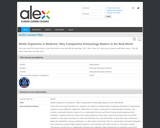
Under the Unity and Diversity DCI, students are asked to evaluate data comparing similarities in developing embryos across different organisms. While this is a classic component of understanding evolution, the modern, real-world reason to learn it is to understand the why and how of using model organisms like zebrafish. Students will learn about how model organisms have been used to find treatments to medical problems in the past, how they are used and selected now, and will be able to draw their own conclusions about the similarities among vertebrates vs. other types of animals. This is a stand-alone lesson/investigation but it would be a great bridge between genetics and evolution and could connect to 7th-grade content. This lesson results from a collaboration between the Alabama State Department of Education and ASTA.
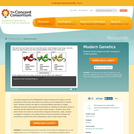
This initial module from the GENIQUEST project introduces the dragons and the inheritance of their traits, then delves into meiosis and its relationship to inherited traits. Students examine the effects of choosing different gametes on dragon offspring, and learn about genetic recombination by creating recombination events to generate specific offspring from two given parent dragons. Students learn about inbred strains and breed an inbred strain of dragons themselves.
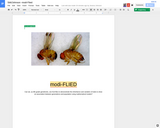
Students will breed fruit flies through several generations and record their data using mathematical models in order to demonstrate the inheritance of trait variations.
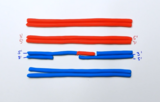
Instructional video on molecular mechanism of homologous recombination in meiosis.
Although textbooks describe this process and show illustrations, it is difficult to grasp without seeing a live demonstration.
Created for Biology 41 General Genetics at Tufts University.
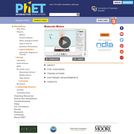
Discover what controls how fast tiny molecular motors in our body pull through a single strand of DNA. How hard can the motor pull in a tug of war with the optical tweezers? Discover what helps it pull harder. Do all molecular motors behave the same?
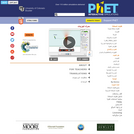
Discover what controls how fast tiny molecular motors in our body pull through a single strand of DNA. How hard can the motor pull in a tug of war with the optical tweezers? Discover what helps it pull harder. Do all molecular motors behave the same?
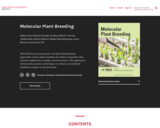
Short Description:
This book focuses on genomics and plant biotechnology approaches used in plant breeding, the analysis of genomic data, and their application in quality control measures. The application of alternative genomic technologies to enhance conventional breeding strategies is also presented.
Long Description:
This book focuses on genomics and plant biotechnology approaches used in plant breeding, the analysis of genomic data, and their application in quality control measures. The application of alternative genomic technologies to enhance conventional breeding strategies is also presented.
Word Count: 78625
(Note: This resource's metadata has been created automatically by reformatting and/or combining the information that the author initially provided as part of a bulk import process.)

Molecular structure of DNA. Nucleotide. Nitrogenous base, phosphate.

Molecular structure of RNA.
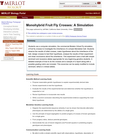
This assignment uses a computer simulation of fruit fly genetics to have students design and interpret monohybrid crosses of a trait with simple dominant and recessive alleles. Detailed instructions with animated examples, background material, a sample report and a rubric are included.

This resource is a video abstract of a research paper created by Research Square on behalf of its authors. It provides a synopsis that's easy to understand, and can be used to introduce the topics it covers to students, researchers, and the general public. The video's transcript is also provided in full, with a portion provided below for preview:
"Crohn’s disease (CD), a subtype of inflammatory bowel disease (IBD), is caused by abnormal interactions between host cells and gut microbes. Some cases of CD are restricted to either the colon or ileum in the gut, but the influence of region on the molecular profile of CD remains unclear. To learn more, researchers recently investigated the molecular and microbial signatures of colonic and ileal CD using human stool samples. Neither bulk DNA sequencing nor host genetic analysis alone could distinguish between colonic and ileal CD. However, integrated “multi-omics” analyses of DNA, RNA, metabolites, and proteins easily differentiated colonic CD from ileal CD. Compared with ileal CD, colonic CD was associated with greater activation of immune cells called neutrophils, and colonic CD severity was correlated with the abundance of the bacterium Bacteroides vulgatus..."
The rest of the transcript, along with a link to the research itself, is available on the resource itself.

It is well known that mutation is the ultimate source of variation. Without adequate variation, plant breeding is impossible. To start a breeding program, the breeder must find the appropriate genotype (containing the desired genes) from existing variation, or create the variation if it is not found in nature. Mutagenesis is the process by which new alleles are created. The purpose of this chapter is to discuss mutagenesis as both a technique and a breeding method. The newly created mutants may be used as parents in future breeding programs, in which case mutagenesis is a breeding technique as a source of variation. However, an induced mutant can be systematically processed through conventional breeding steps to be released as a cultivar, hence making it a breeding method (mutation breeding). Mutations arise spontaneously in nature and are pivotal in natural evolution.